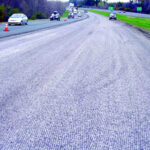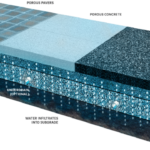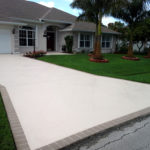Pothole repair material

Potholes are a common problem on roadways, parking lots, and other paved surfaces. They not only pose a safety hazard but can also cause damage to vehicles and lead to costly repairs. To address this issue, various pothole repair materials have been developed over the years. In this article, we will explore different pothole repair materials, their characteristics, and their effectiveness in fixing these road imperfections.
- Cold Patch Asphalt: Cold patch asphalt is one of the most commonly used materials for pothole repair. It is a mixture of asphalt, aggregate, and a binder that can be applied directly to the pothole without heating. Cold patch asphalt is available in bags or buckets, making it convenient for small-scale repairs.
Advantages:
- Easy to use and requires minimal equipment.
- Can be applied in cold temperatures, making it suitable for year-round repairs.
- Provides a temporary fix that can last for several months or even years, depending on traffic conditions and weather.
Limitations:
- Not as durable as hot mix asphalt and may require frequent reapplication.
- Prone to displacement or breaking apart under heavy traffic.
- Less effective for large or deep potholes.
- Hot Mix Asphalt: Hot mix asphalt is a commonly used material for permanent pothole repairs. It is produced at asphalt plants by heating a mixture of aggregate and asphalt binder to a high temperature before being transported to the repair site.
Advantages:
- Offers superior durability and longevity compared to cold patch asphalt.
- Bonds well with existing pavement, providing a more seamless repair.
- Suitable for both small and large-scale repairs, including deep potholes.
Limitations:
- Requires specialized equipment and trained personnel for installation.
- Requires heating at the plant and transportation to the repair site.
- May not be readily available in remote areas.
- Asphalt Emulsion: Asphalt emulsion is a mixture of asphalt binder and water. It is often used as a tack coat or bonding agent in pothole repairs to improve adhesion between the existing pavement and the repair material. Asphalt emulsion is typically applied before the placement of other repair materials, such as cold or hot mix asphalt.
Advantages:
- Enhances the bond between the existing pavement and the repair material.
- Helps prevent water infiltration, which can cause further damage to the repair.
- Can be used in combination with various repair materials for improved performance.
Limitations:
- Does not provide a complete repair on its own and requires additional materials for proper pothole filling.
- Requires proper application techniques to ensure effective bonding.
- Concrete Patching Materials: For concrete surfaces, various patching materials are available for repairing potholes or other surface defects. These materials are typically a mixture of cement, aggregates, and additives that can be applied to damaged concrete areas.
Advantages:
- Provides a durable and long-lasting repair for concrete potholes.
- Can be customized to match the appearance of the existing concrete surface.
- Resistant to heavy traffic and environmental conditions.
Limitations:
- Requires proper surface preparation to ensure adhesion.
- Curing time may be longer compared to asphalt repairs.
- Not suitable for repairs on asphalt or other non-concrete surfaces.
- Polymer-Modified Repair Materials: Polymer-modified repair materials are designed to enhance the performance and durability of pothole repairs. These materials typically contain additives or polymers that improve flexibility, adhesion, and resistance to cracking.
Advantages:
- Offers improved durability and longevity compared to traditional repair materials.
- Provides better resistance to temperature fluctuations and heavy traffic.
- Can be used in both asphalt and concrete pothole repairs.
Limitations:
- Generally more expensive than standard repair materials.
- May require specialized equipment or installation techniques.
In conclusion, various pothole repair materials are available to address the common problem of road imperfections. The choice of material depends on factors such as the scale of the repair, existing pavement type, budget, and desired longevity. Cold patch asphalt is a convenient and temporary solution for small-scale repairs, while hot mix asphalt offers superior durability for permanent fixes. Asphalt emulsion enhances bonding and prevents water infiltration. Concrete patching materials are suitable for repairing potholes on concrete surfaces, and polymer-modified materials provide enhanced performance and longevity. Selecting the appropriate pothole repair material and following proper installation techniques are crucial for achieving long-lasting and effective repairs.
Contact us
 Phone Call |
 Text Message |
 |







